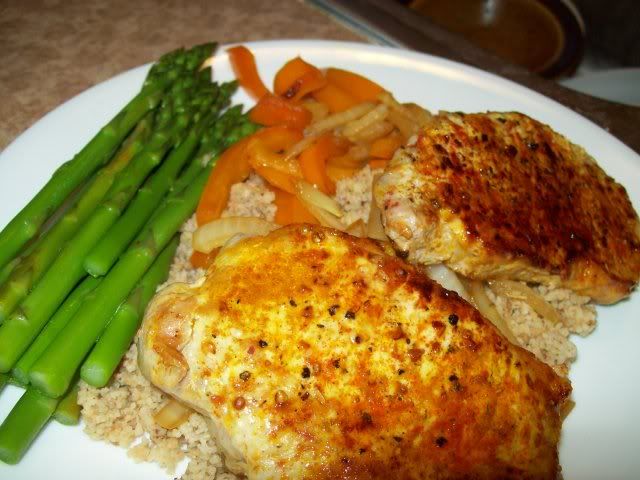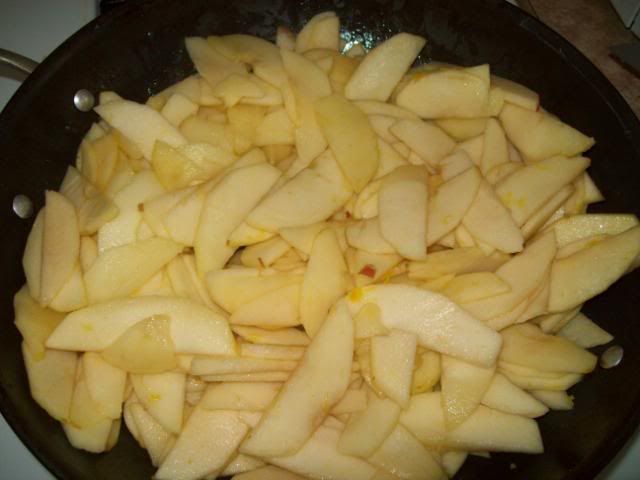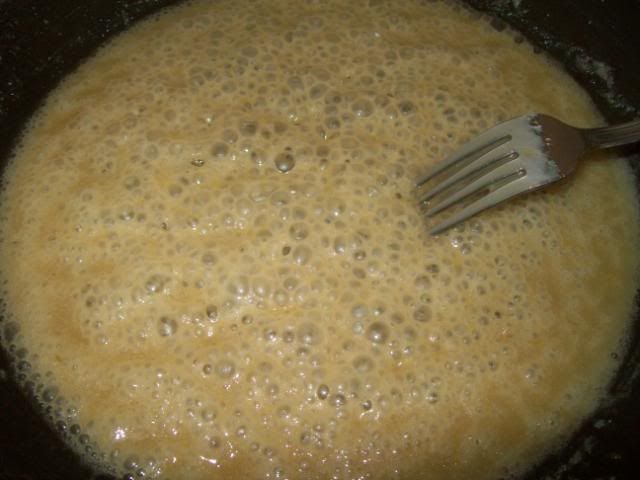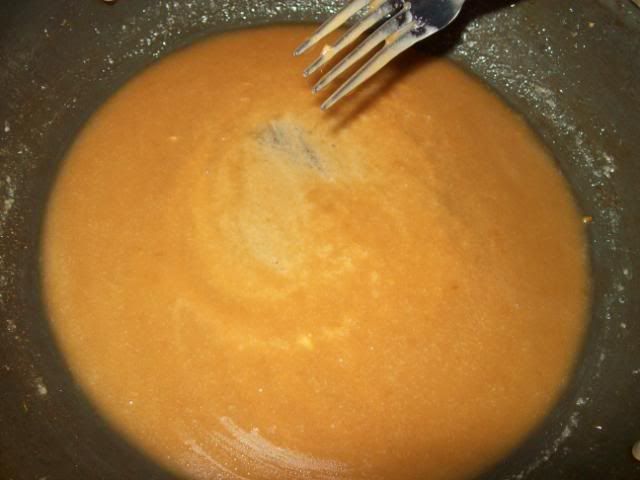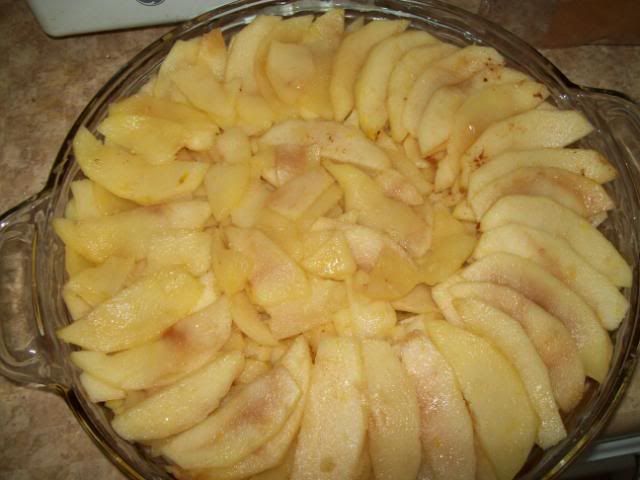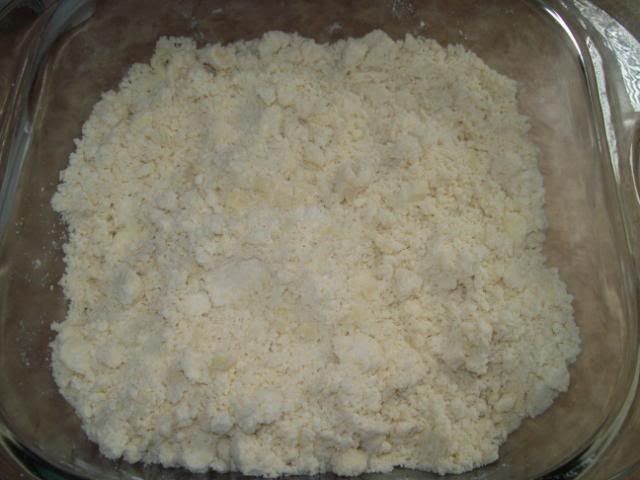So I'm completely in love with making my own dough lately. It all started with the Chinese dumplings, then it moved to Southern biscuits... but now I'm on the empanadas hard. Here's the recipe I used for my latest batch, which had spicy beef picadillo, potatoes, and goat cheese (amongst other things). In all, it takes a few hours, but you get a bunch of them and if you tag-team with someone else, I'm sure it would go much faster. You can use almost whatever you want in empanadas... Argentine food is famous for its Italian influences, but you can pretty much put anything you like inside these delicious little pastry packets. I made some vegetarian ones with Italian vegetables, and I plan to make some with chorizo and potatoes soon.
Dough:1.5 C All-Purpose Flour
4 tbs fat (I used all butter in one batch, half lard/half butter in another)
1 egg yolk
1/2 tsp salt (I used Kosher)
~3/4 C milk
The easiest way to do this is in a food processor -- just pulse the flour and the fat together until it looks like cornmeal.. if you've made biscuits or pie crust, you're familiar with this. Add the egg yolk and a bit of milk then pulse to combine. Keep adding milk in small increments while pulsing until the dough begins to pull away. Once it will hold together when you lightly knead it, it's ready to go. Form the dough into 2 or 3 thick discs and chill in the fridge for 30 minutes or until you need it. Cover it with plastic wrap or in a covered container if you plan to leave it for longer than a few hours though.
Note on this recipe: normally empanada dough doesn't have milk in it, but apparently they make them this way in the Mendoza region of Argentina and it makes a fluffier final product. I decided to try it out and really liked the texture. You could also use water, which I might do for my next batch to see if I can get some fairly crispy as a change of pace.
Roll out the dough as thinly as you can (right before it's transparent, about 1 mm) and cut out rounds with the instrument of your choice. I used an oatmeal canister top, but it just depends on what size you want. Re-roll the scraps until you have one final awkward looking one remaining, which you will eat as soon as it comes out of the oven. Chill the dough rounds until ready to use.. sooner the better though, as you don't want it to get dry.
Filling:1 lb ground beef
2 white onions, diced finely
1 bunch green onions
4 potatoes, peeled then boiled in salted water until fork tender
3-4 garlic cloves, minced
2 tbs ground chile powder (chile molido)
1 tbs cumin, preferably whole toasted and then ground
Fresh oregano and cilantro, chopped
Smoked paprika to taste (if you have it.. I didn't, unfortunately)
Salt/Black pepper
Cook the onions until translucent over medium heat (salt them to facilitate sweating), then add the beef, smashing/stirring it with a spatula to break it in to small pieces. Add the garlic when the beef is about halfway done to prevent burning, then add the spices and finish cooking the beef. Remove the beef mixture with a slotted spoon and combine with the potatoes, which should be diced up small and then mashed in with the beef. Add diced green onions, cilantro, and oregano (to taste). Put everything in the fridge to chill after tasting for spice levels (I added more salt due to the potatoes and also some extra chile molido).
Assembly:Spoon a medium spoonful of filling into the center of your dough. I made this batch with goat cheese stuffed inside, so I did about 50% here with the goat cheese loaded in the spoonful:
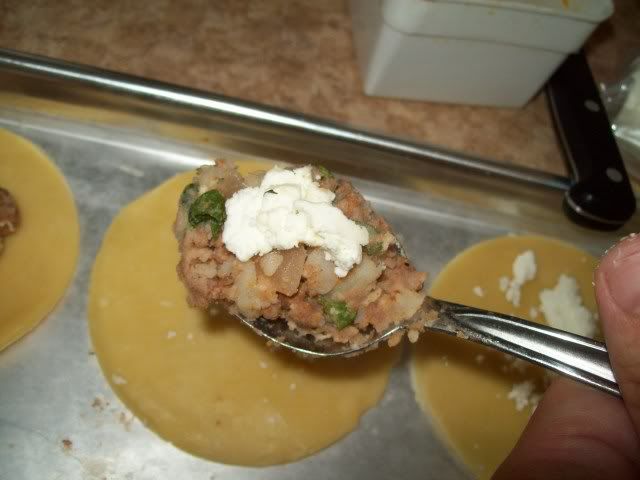
Then topped it off with a packed disc of filling to prevent the cheese from oozing all over the place:
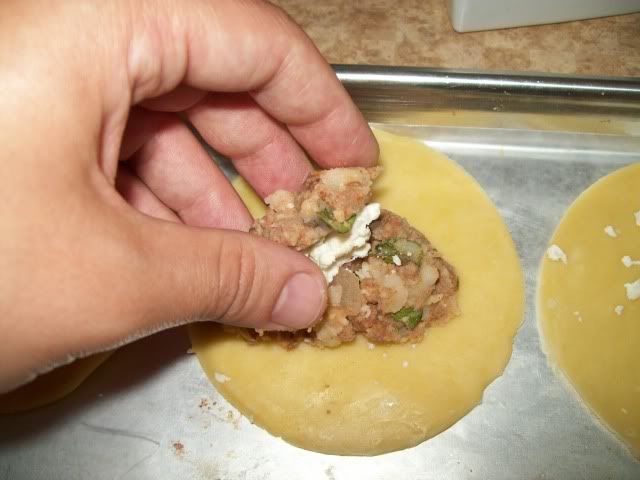
Now here's the fun part. I made an exceedingly crappy video trying to show my technique, but it was tough to do while holding the camera. Anyway, you want to brush the edge of half the dough with egg white, basically pinch together the two ends of the dough (like a taco), then close it up from edge to edge, being careful of filling getting in between the dry dough and the egg white side. Then you should do another seal with the side of your hand as seen here -- this creates a nice bump as well as a bigger rim, making an ornate sealing method easier.

I fold the ends over and then pinch the dough to seal it and make a nice looking empanada -- you could also just use the tines of a fork or fold it.. whatever works and keeps it sealed:

Let the empanadas rest in the fridge for another 30 minutes before baking. Pre-heat your oven to 350 degrees, then brush the empanadas with egg yolk and sprinkle with salt (again, Kosher or sea salt is much better for this kind of thing). I did this on a wax paper lined sheet pan that would be used to bake them as wlel -- parchment paper is probably better, but I didn't have any:

Bake at 350 for approximately 20 minutes. But really, just wait until they're slightly brown and totally firm and you're good to go.. I think mine took 24 minutes. Yummy:
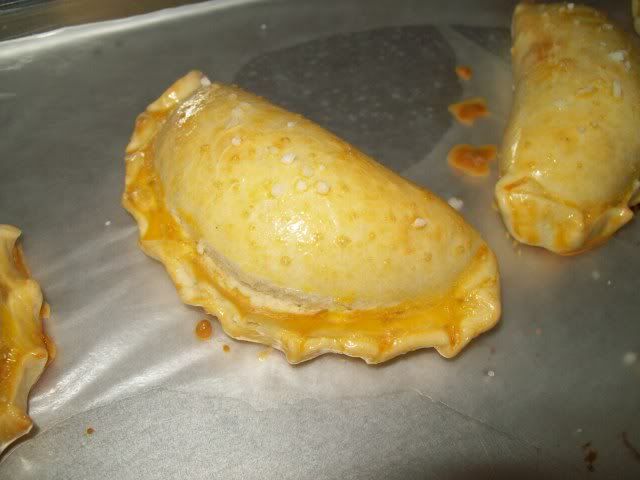
Enjoy with a quick blender chimichurri with whatever fresh herbs you have on hand (basil, parsley, oregano, cilantro all work well), olive oil, vinegar (white or balsamic works), garlic, onions (if desired.. they'll be raw white onions), chile powder, and salt/pepper.
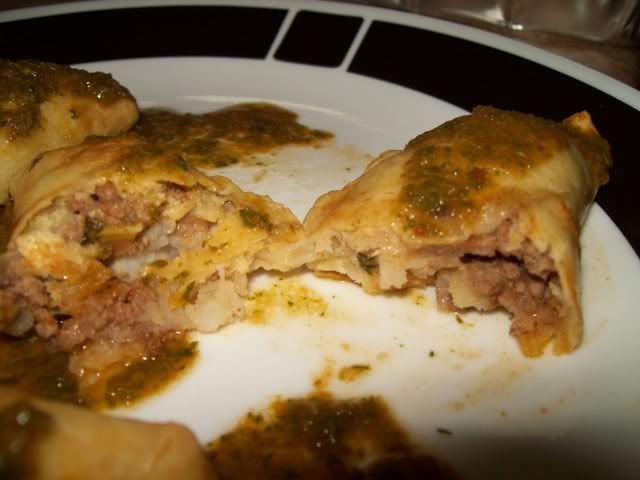
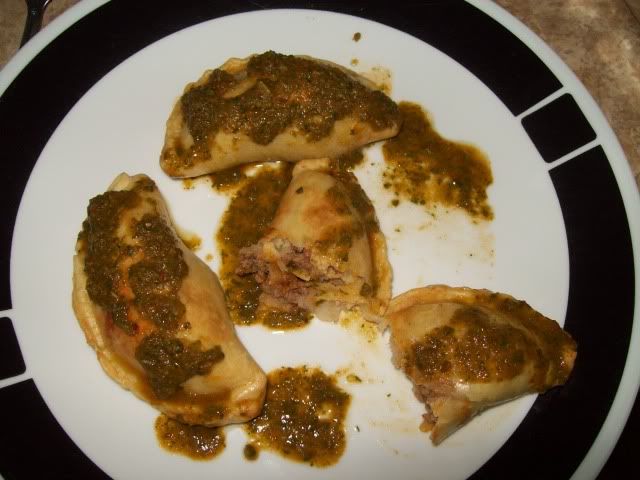
I'll probably post the technique video even though it sucks. Or maybe I'll just make more of these delicious little bastards and shoot another one. Enjoy!
